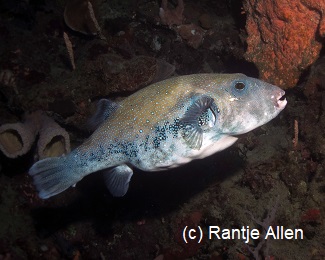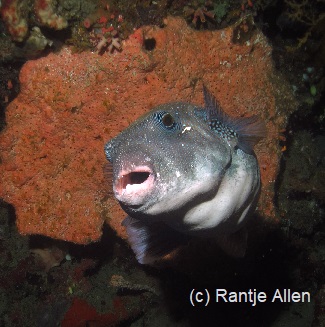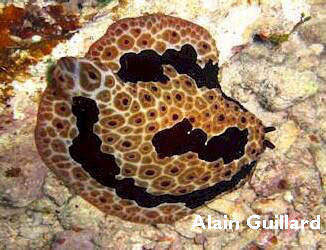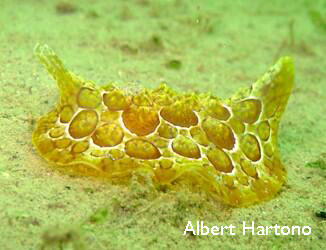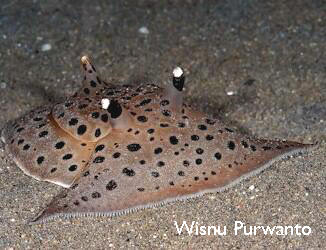Loading content - please wait...
Arothron caeruleopunctatus pufferfish hiding in plain sight
Arothron caeruleopunctatus is a large pufferfish that hid in plain sight until a Japanese researcher named it in 1994.
Not the Other Blue-spotted Puffer
Scientific names are always best to identify marine life. Although the name of the large puffer Arothron caeruleopunctatus means “blue-spotted,” another small pufferfish is often called the Blue-spotted puffer. That fish is a small toby named Canthigaster solandri. It has various blue spots and a colorful body. An internet search for a blue spotted puffer will produce photos for C. solandri, not A. caeruleopunctatus.
Arothron caeruleopunctatus can measure to 80 centimeters in length. That makes this species one of the largest pufferfishes worldwide. Divers giving it a casual glance would find it uninteresting. Its body is primarily dull with hues of gray and dark blue. Ventrally, it is often white. Dorsally, it can have a yellow, irregular blotch. The fish’s scientific name comes from the numerous blue to white spots found on its body. These are round to rice shaped. Also, concentric lines circle the fish’s eyes.
Unnoticed until 1994
Divers assumed that this oval-shaped fish was one of the other large puffers that live in Indo-Pacific waters. However, in 1994, Dr. Keiichi Matsuura published his finding of this pufferfish that had been hiding is plain sight. Dr. Matsuura is curator emeritus at the zoology department of the Museum of Nature and Science in Tsukuba, Japan.
In addition to Arothron caeruleopunctatus, he has discovered and named other pufferfishes. These include Arothron multilineatus (2016) from Ryukyu Islands, Japan, and Chelonodontops alvheimi (2018) from Myanmar. Also, he named a new Fugu puffer, Takifugu flavipterus (2017) from Japan, Korea, China, Taiwan, and Far East Russia. Another pufferfish he named is Canthigaster aziz (2020) from the northern Red Sea off Saudi Arabia.
Arothron caeruleopunctatus in Gorontalo
Divers can see this Blue-spotted puffer occasionally along Gorontalo’s coral reefs and deep walls. Like other large pufferfishes
, it is quite shy around divers. Careful approach can reward a patient diver with a clear view of the blue-spotted pattern of this fish. It lives from two meters to below safe diving limits.A close look reveals that its skin lacks scales. Also, its dorsal and anal fins are small. These are located towards the back of its body and are symmetrical. Moreover, it lacks a pelvic fin. Its short snout has two pairs of nostrils. It feeds on invertebrates that live on the substrate. To feed, it uses its four strong teeth. This pufferfish is active during the day.
For your chance to see Arothron caeruleopunctatus in Gorontalo, please make your dive reservations directly with Miguel’s Diving.





